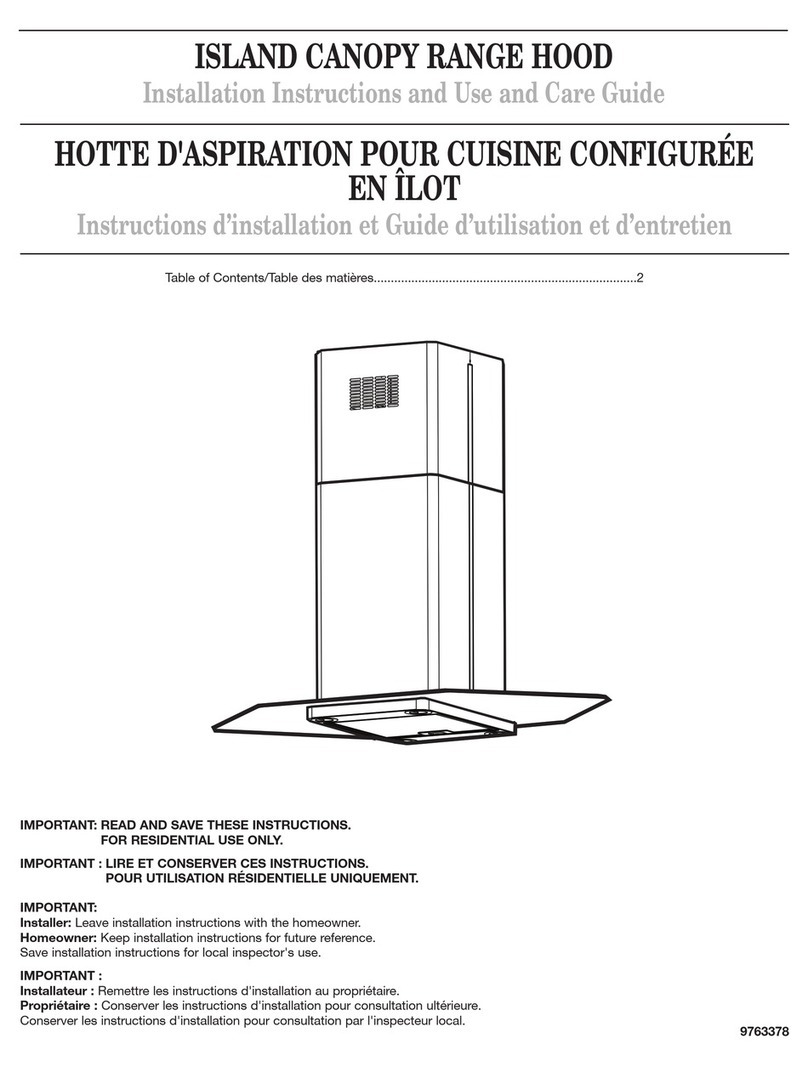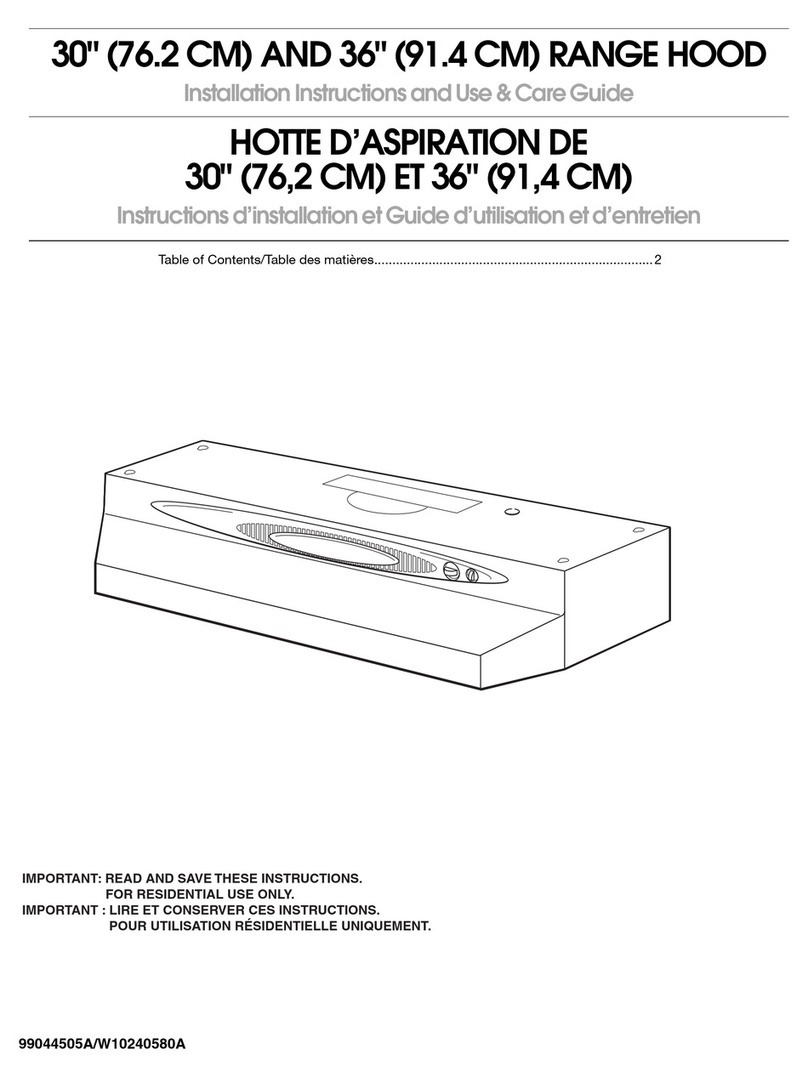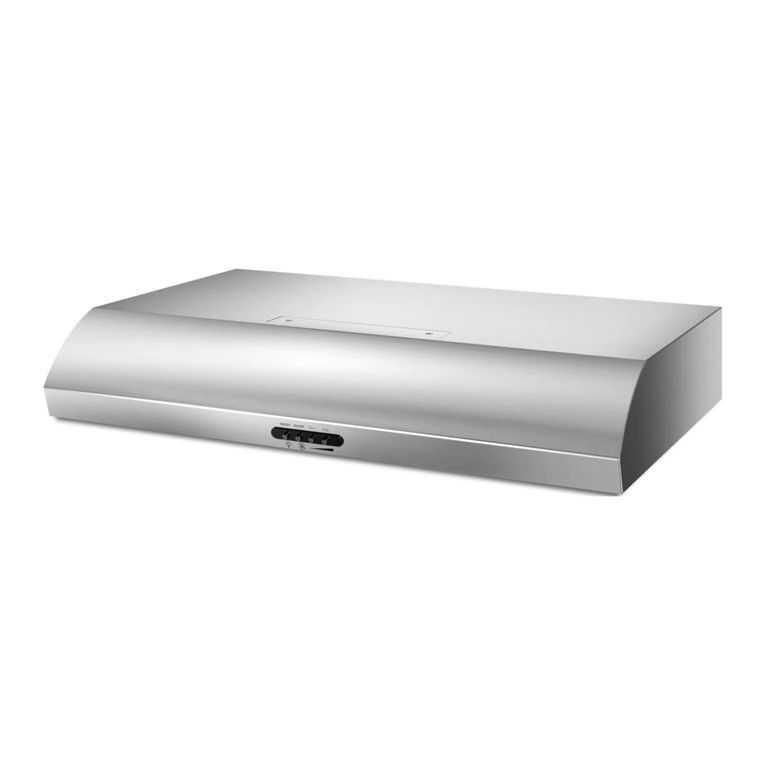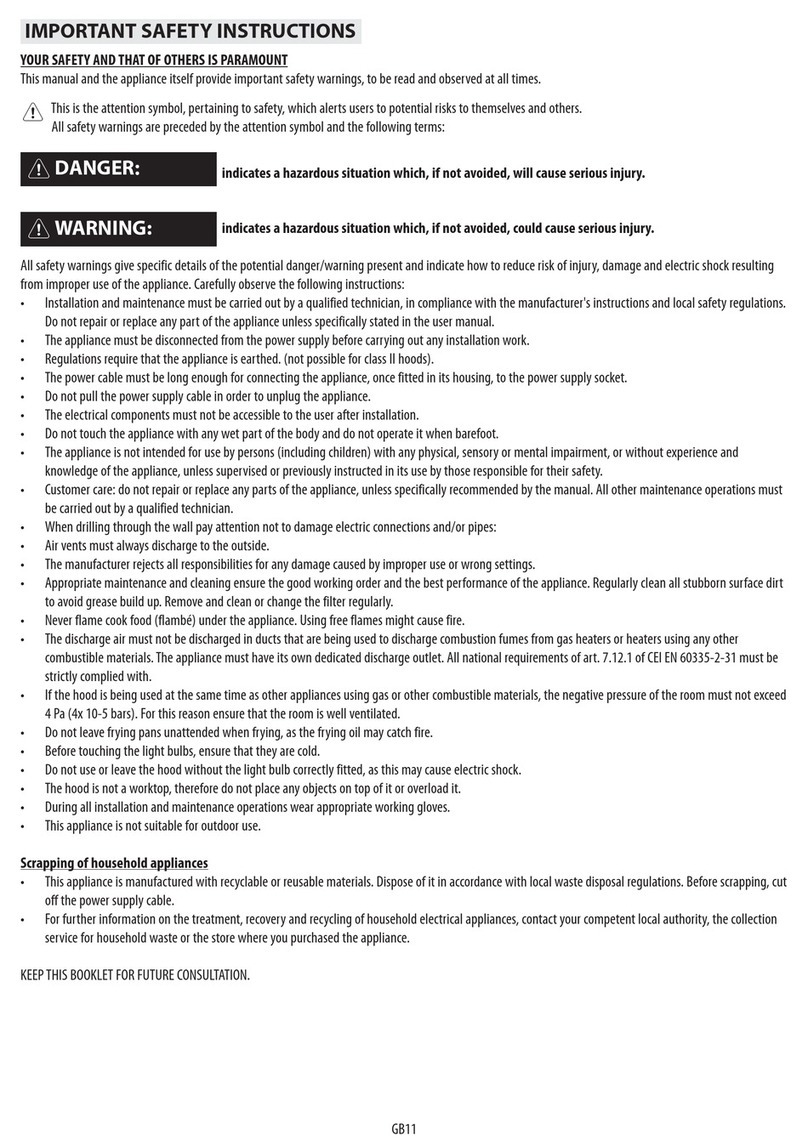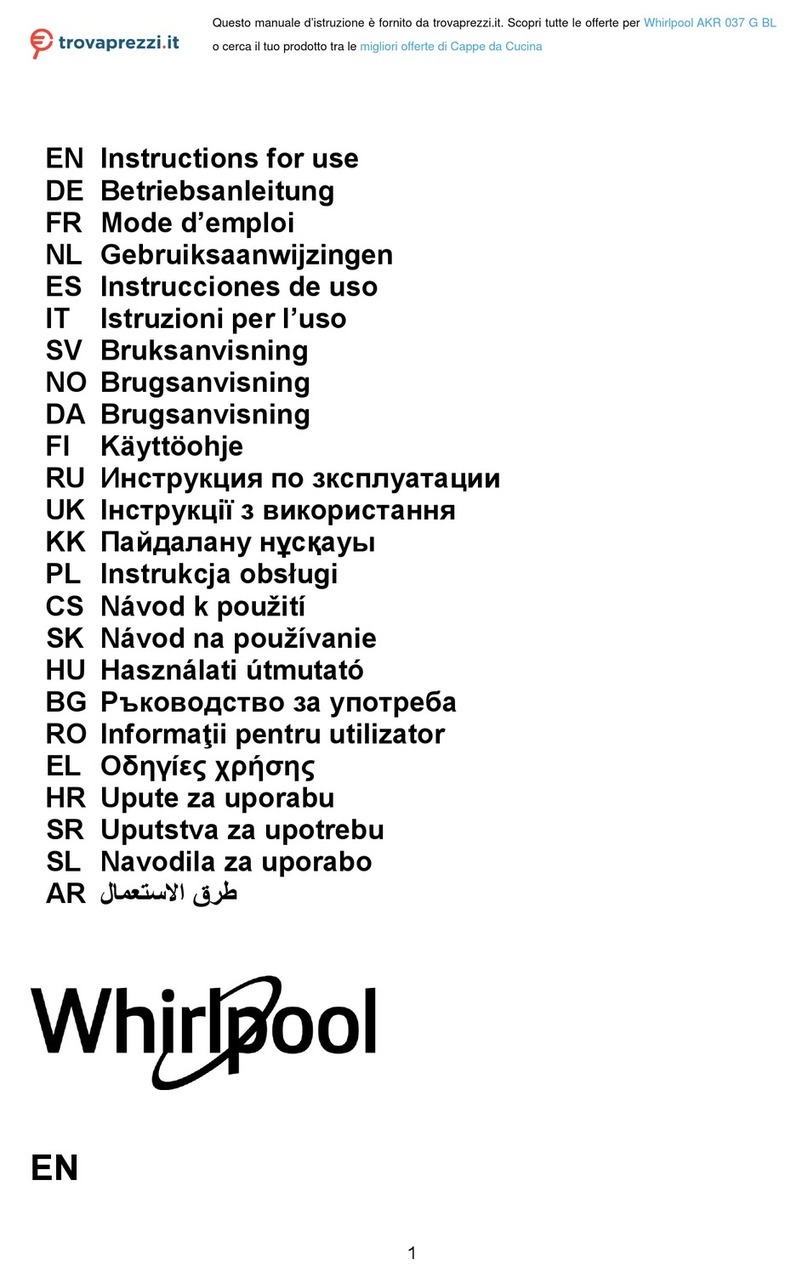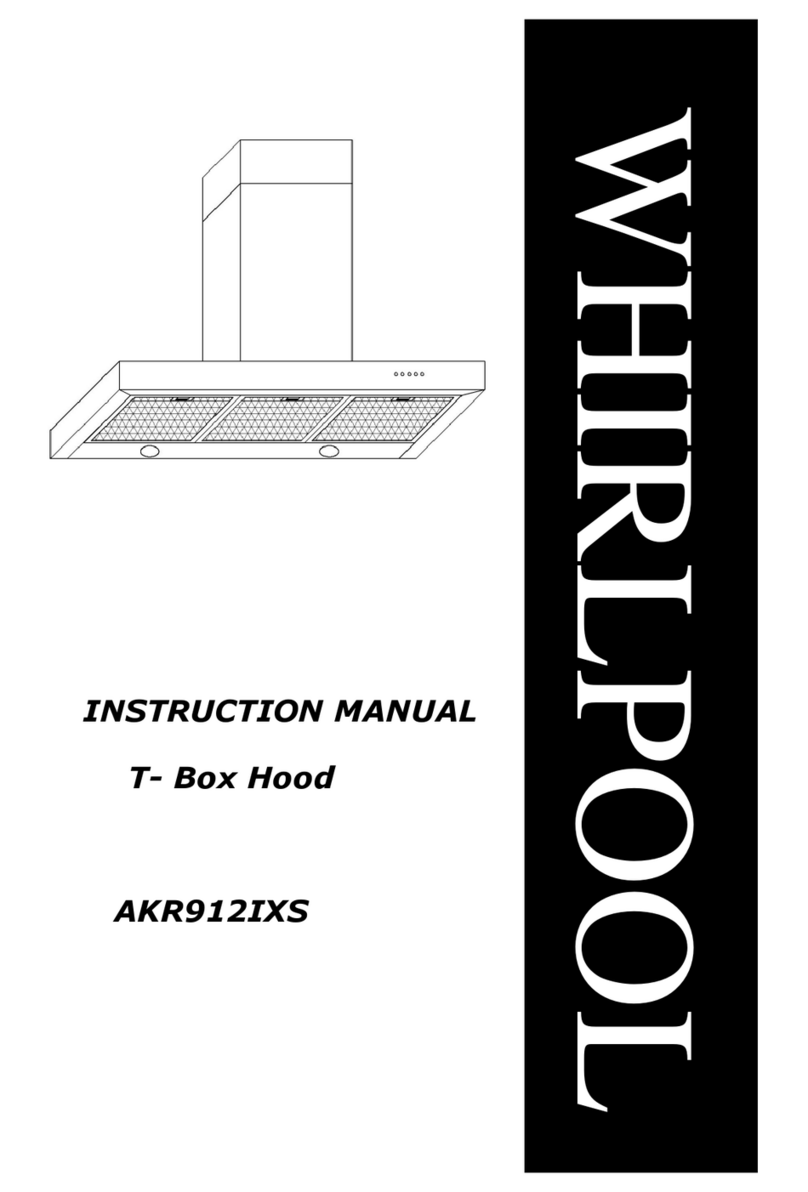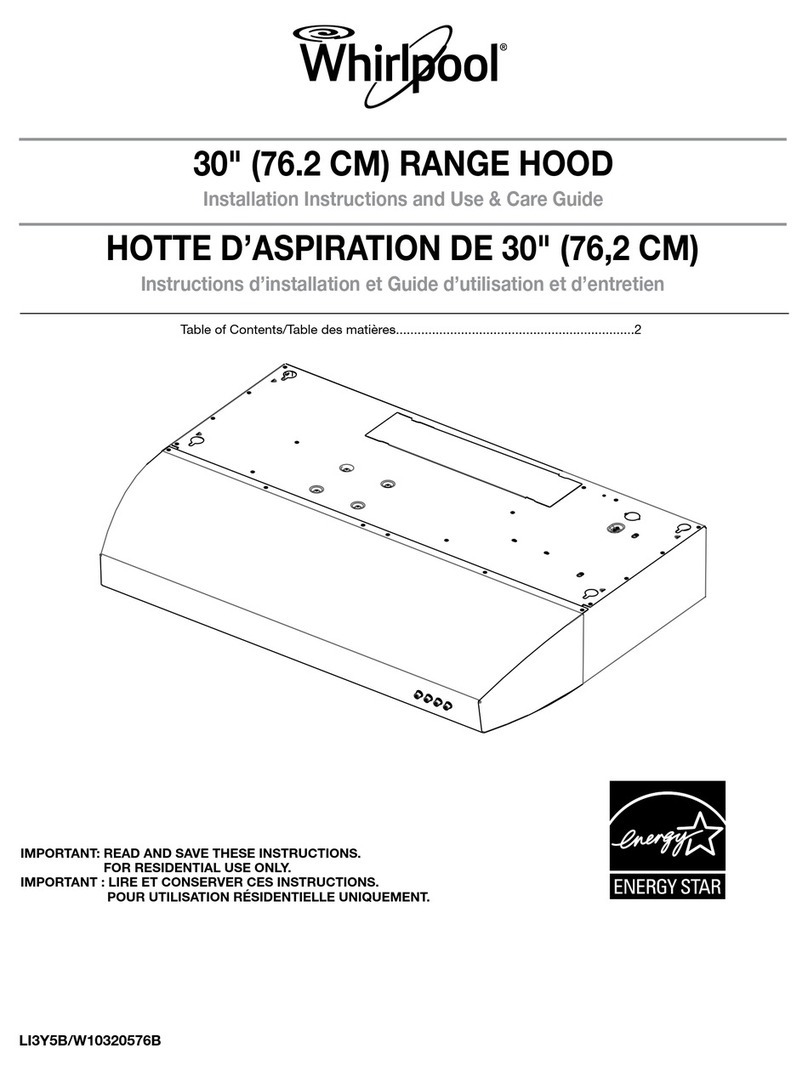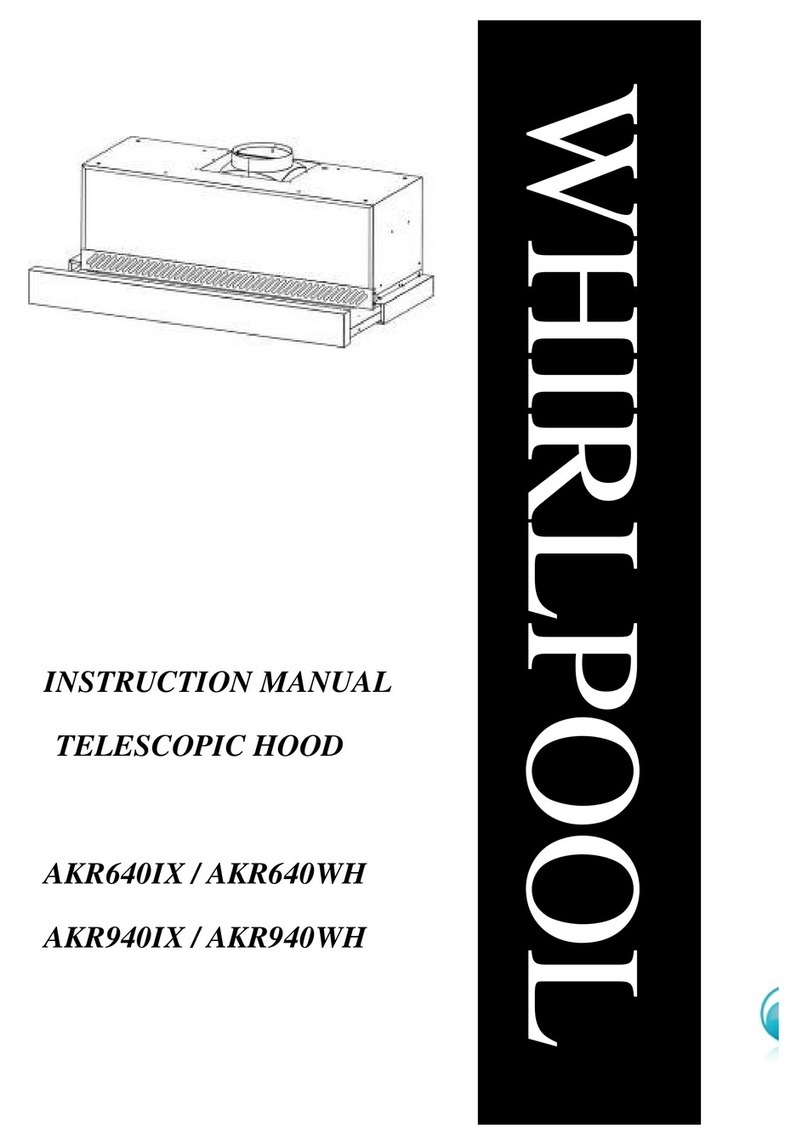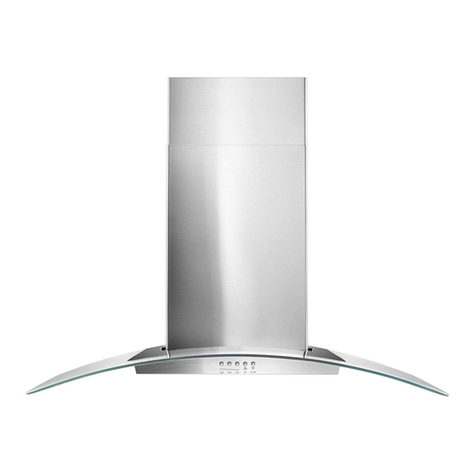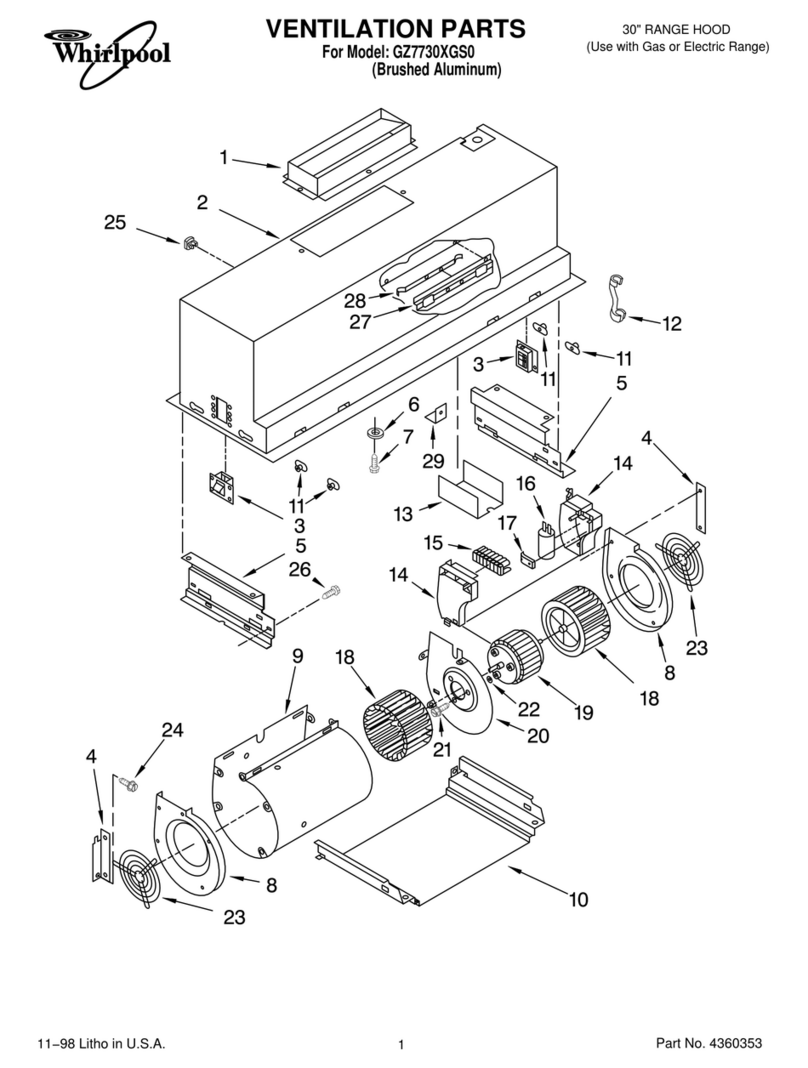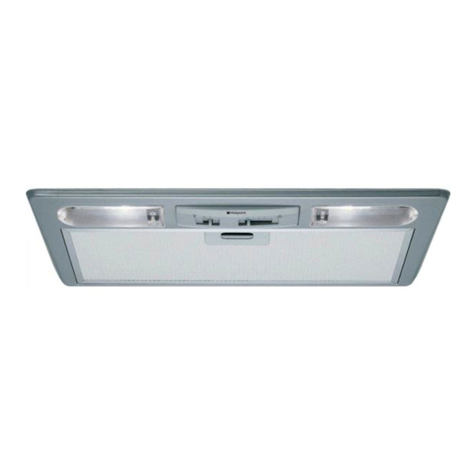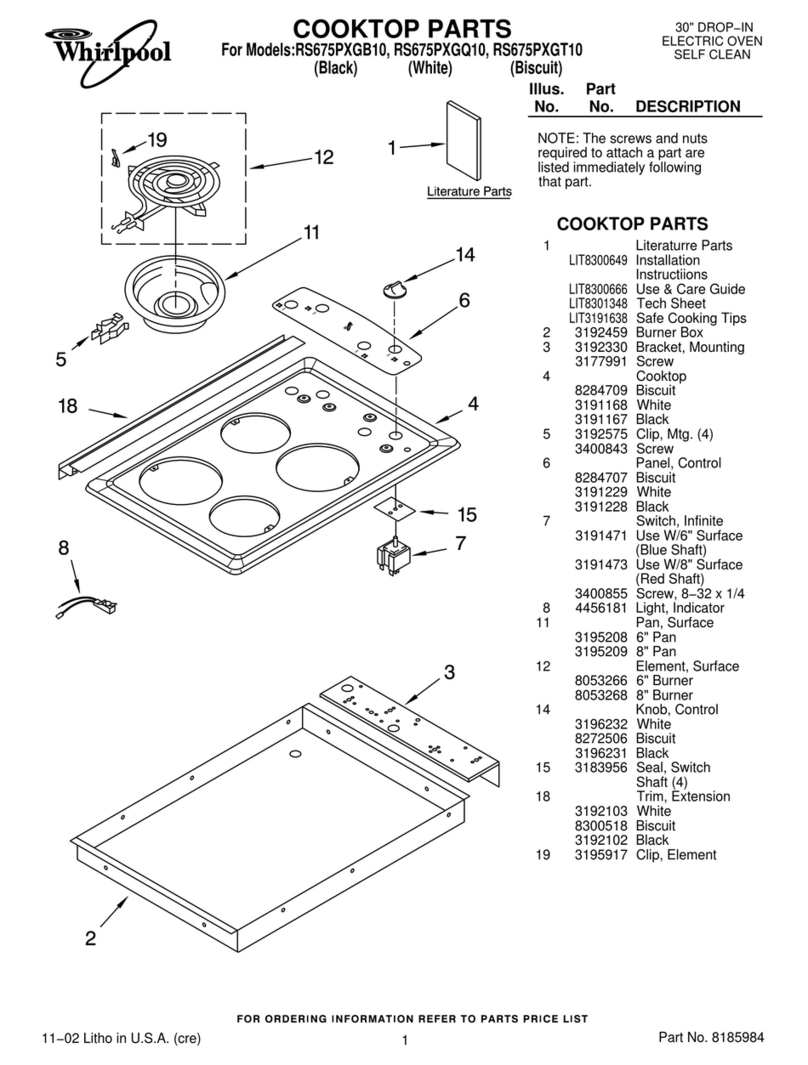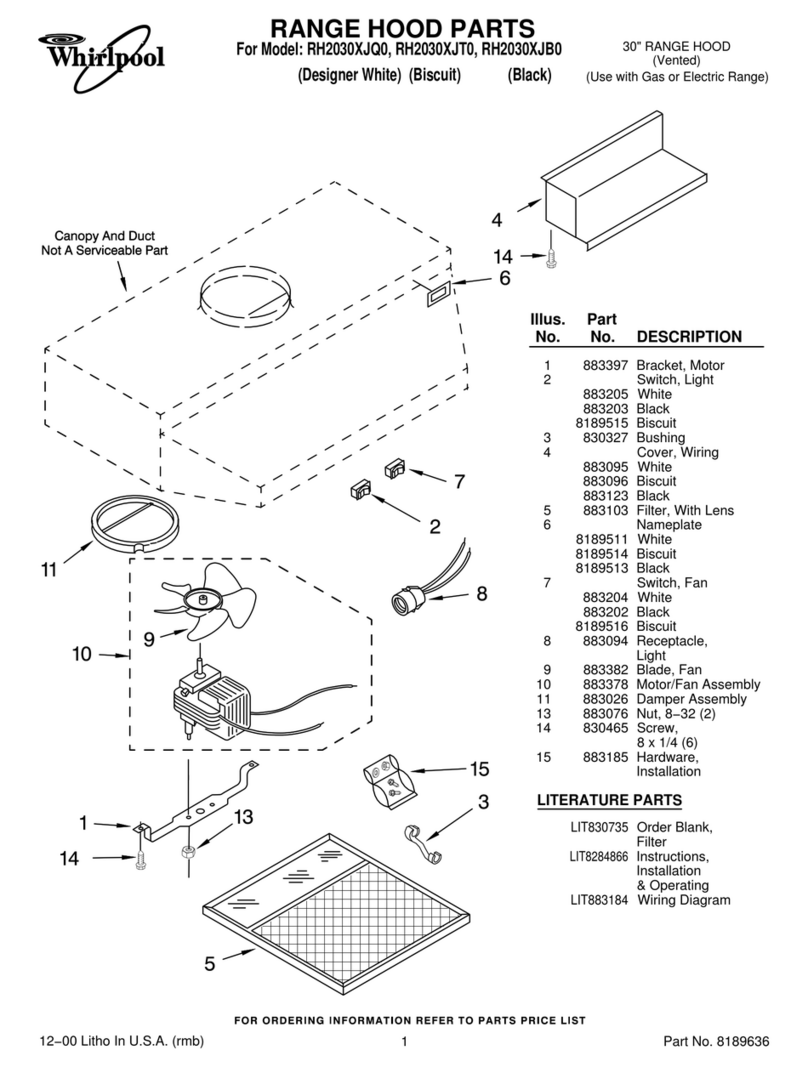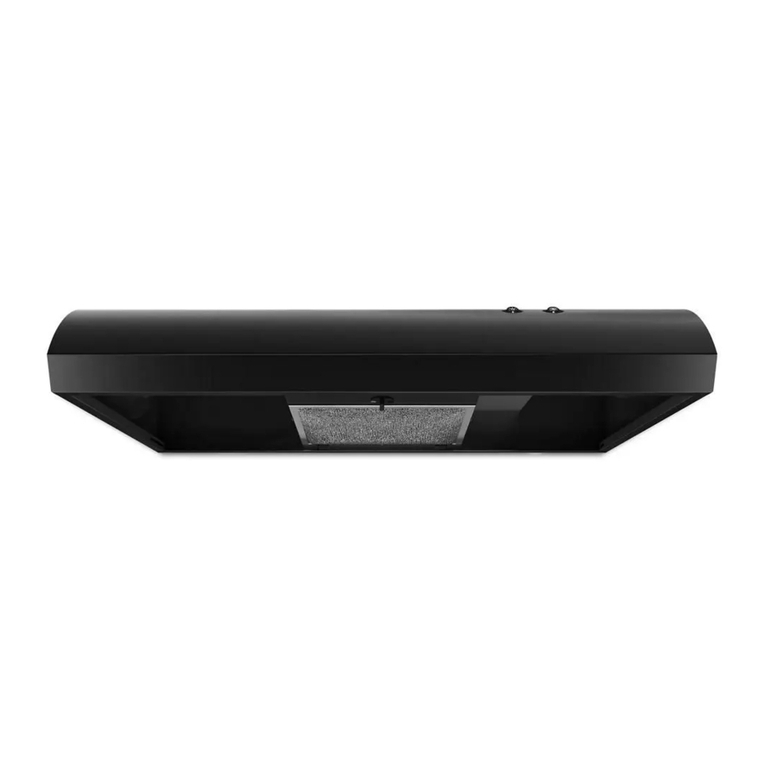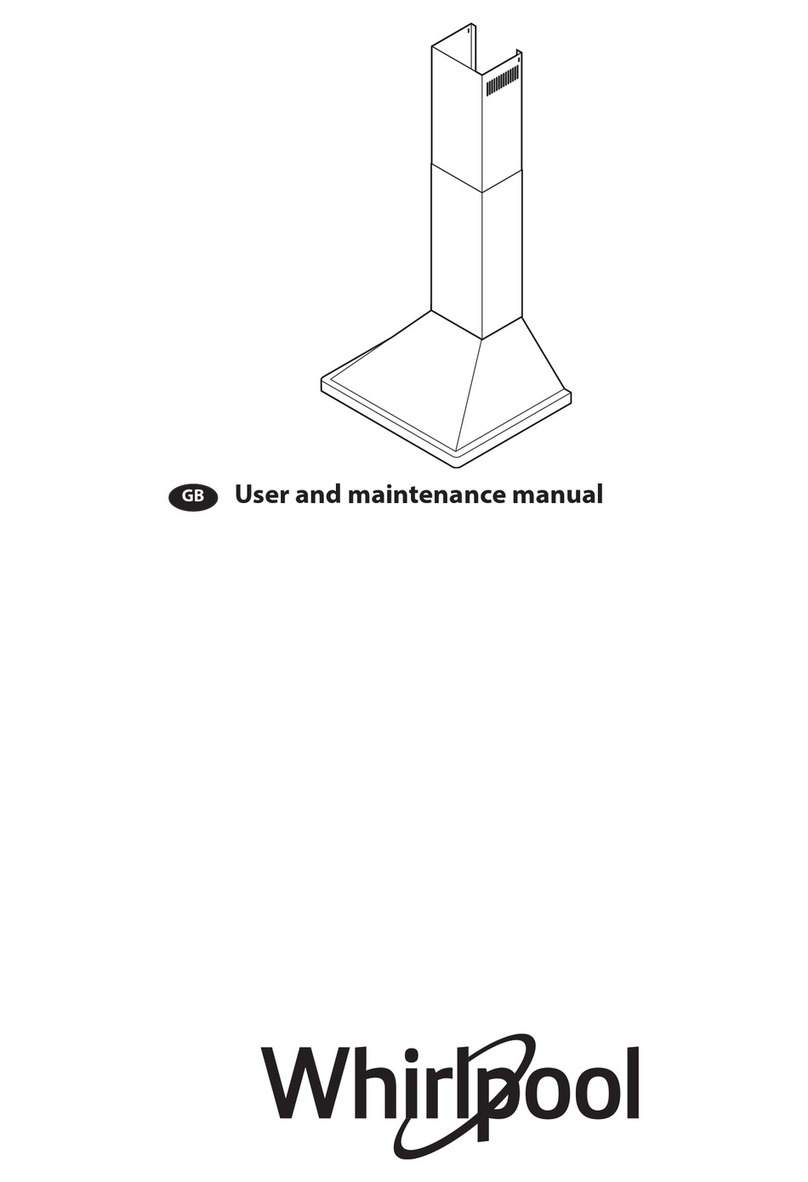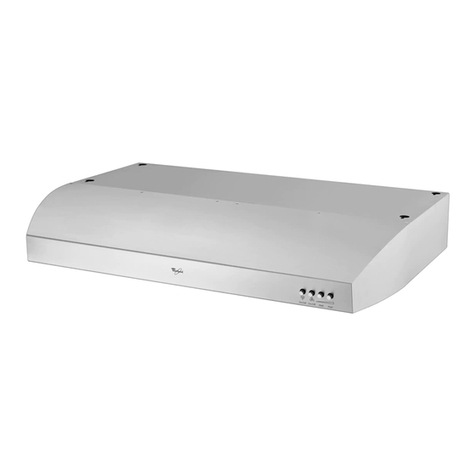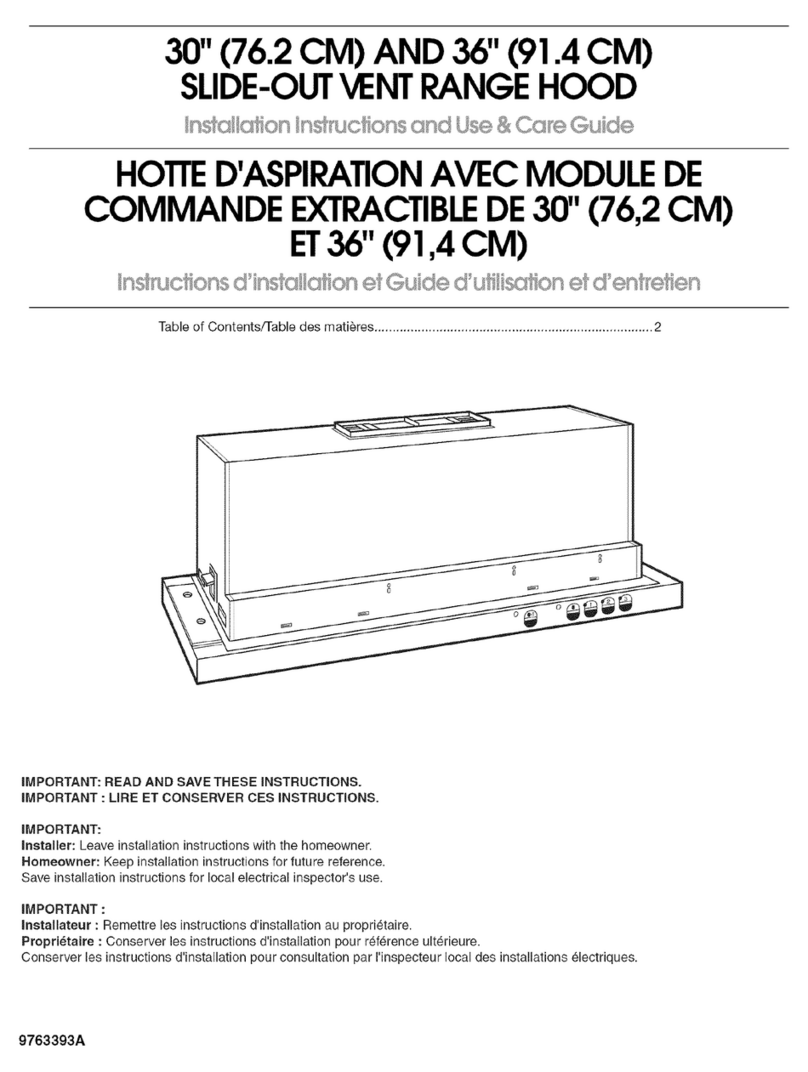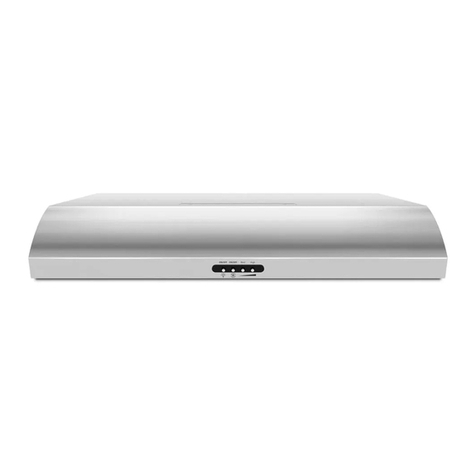Electrical
requirements Venting
requirements
wall cap
-...
-...
:ii
......‘.1_ 7
;,.A..
/$c”l10” */
- 3-l/4” x 10”
throi22 the
3-l through the wall
Electrical Shock Hazard
. Electrical ground is required on this
appliance.
l
If cold water pipe is interrupted by
plastic, non-metallic gaskets or
other insulating materials, Do Not
use for grounding.
l
Do Not ground to a gas pipe.
l
Do Not modify the power supply
cord plug. If it does not fit the outlet,
have a proper outlet installed by a
qualified electrician.
l
Check with a qualified electrician if
you are in doubt as to whether the
appliance is properly grounded.
Failure to follow these instructions
could result in serious injury or death.
Fire Hazard
l
Terminate venting system to the
outside or into the kitchen.
l
Do Not terminate the venting system
in an attic or other enclosed space.
l
Use only metal ductwork.
l
Seal all ductwork with duct tape.
Failure to follow these instructions
could result in a fire.
wall cap
round duct
3-l/4” x 10” to
round ductwork
Ductwork needed for installation is not
included. Wall or roof caps used must
have backdrafi dampers.
The range hood can be vented
vertically through the roof or
horizontally through the wall.
The range hood can also be installed
nonvented (recirculating).
Determine which venting method you
wish to use - outside venting or
recirculating.
The length of the ductwork and number
of elbows should be kept to a minimum
to provide efficient performance. The
size of the ductwork should be uniform.
Do Not install two elbows together. Use
duct tape to seal all joints in the
ductwork system. Ductwork can
terminate either through the roof or wall.
Use opening around exhaust hood. For
the most efficient and quiet operation, it
isrecommended that the range hood
be vented vertically through the roof
through 7” round ductwork.
Figures l-3 show through the roof and
through the wall methods and what
types of materials are needed.
Figure 3
transition
Recommended ductwork length
Use 3-l/4” x 10” or 6” ductwork with a
maximum length of 26 feet for ductwork
system. For best performance, use no
more than three 90” elbows. To
calculate the length of system you
need, add the equivalent feet for each
ductwork piece used in the system. See
the following examples.
If codes permit and a separate
grounding wire is used, it is
recommended that a qualified
electrician determine that the
grounding path is adequate.
A
w A 115volt, 60-Hz, AC-only, fused
electrical supply is required. The total
ampere load used, including the range
hood, must not exceed 90% of rated
capacity of the circuit. The ampere
rating of the range hood islocated on
the serial/rating plate located behind
range hood door and on the front
frame.
3-l/4” x 10”ductwork system
wall
6” _ _......I..........+ yap
B
w It isthe personal responsibility and
obligation of the customer to contact a
qualified electrician to assure that the
electrical installation isadequate and in
conformance with the National
Electrical Code ANSI/NFPA 70 - latest
edition* and all local codes and
ordinances.
Maximum length = 26 feet
2
ft. 190” elbow = 5 ft.
8 feet straight =8ft.
1 wall cap =Oft.
Length of
3-l/4” x 10” system = 13ft.
Recommended standard fittings
Vertical Roof Venting
loof cap
cDamper
3.1/4"XlO" tkrl
eltmw=12tt. 3-l/4" x10'wall
cap=Ott.
6” ductwork system
90”
elbow;&;_._......................6”.............................__..._s>..j
Horizontal Wall Venting
Maximum length = 26 feet
= 45l=t.
2 90” elbows =lO ft.
3.,/4"x
10”
8 feet straight = 8 ft.
to 6” transition 1 wall cap = 0 ft.
HoodL.: II
.::;;.
d
Oven ..;.
....
Figure 2
Length of 6” system = 22.5 ft.
Recommended standard fittings
.,:.Damper
,.: .;.....iWall cap
..::::..
_..
b
3-114" xlO'to6" I 6"to3-l/4" x10"
9o"ebow=5H. 9O~elbow=9ft.
:<<::::;:+.
45” elbow
=2.5 tt.
90” elbow I b-to3-1/4"x
= 5 n. 10' flat = 1 It.
Panel B
